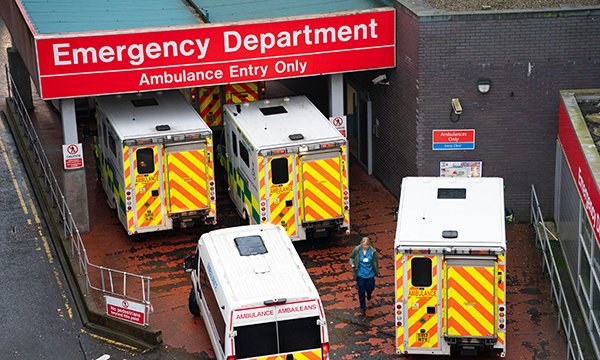Acute hospital pressures: ambulance hubs ‘just a sticky plaster’

Nurses sceptical that plan to use hubs and discharge lounges will ease pressures on emergency teams, saying it’s short-staffing that needs to be addressed

New ambulance hubs and discharge lounges designed to reduce pressure on nurses and other healthcare staff could end up doing the opposite, nurses suggest.
Plans for six ambulance hubs and more than 40 new or upgraded discharge lounges at hospitals in England were announced by health and social care secretary Steve Barclay last week.
The hubs should provide extra space for the care of patients brought to hospital by ambulance, helping prevent ambulance queues and allowing crews to get back on the road more quickly. Discharge lounges cater for patients who are ready to go home but waiting for medication or transport.
Discharge lounges are not new – and who will staff them?
The government says the measures will help ease pressure on nurses and prevent risky and undignified ‘corridor care’. But nurses have reacted with scepticism, with some claiming the new facilities are little more than extra waiting areas that will be difficult to staff safely.
Some used Twitter to express their dismay, pointing out that discharge areas were not new or a solution to chronic under-staffing.
One nurse said: ‘If he’d ever set foot inside a busy discharge lounge he’d maybe realise that this a grubby sticking plaster for a festering wound.’
An intensive care nurse added: ‘There will be no nurses to run the discharge lounges. They and the paramedics will have left for less health-damaging, better-regarded and better-paid professions.’
Plan to ease pressure on emergency departments is evidence-based – minister
Emergency nurses who spoke out at this year’s RCN congress described their distress at having to look after patients in corridors, and their fears they could be struck off for failing to provide safe care.
But Mr Barclay told Nursing Standard the £50 million plan, together with funding for 5,000 extra acute and adult social care beds will ease pressure on nurses, help tackle burnout and prevent care from spilling over into corridors.
The government said there was evidence newly-established ambulance hubs were already speeding up patient handover and reducing delays, while discharge lounges were improving patient flow.
NHS workforce plan is what’s needed most – RCN
However, the RCN warned that without a proper plan for the NHS workforce, waiting lists would continue to grow.
‘These new hubs may alleviate some of the pressures but there must also be investment in the staff needed to treat patients and a social care system to provide the much-needed care in the community,’ said an RCN spokesperson. ‘Otherwise, it will be impossible to cut waiting times.’
In other news
